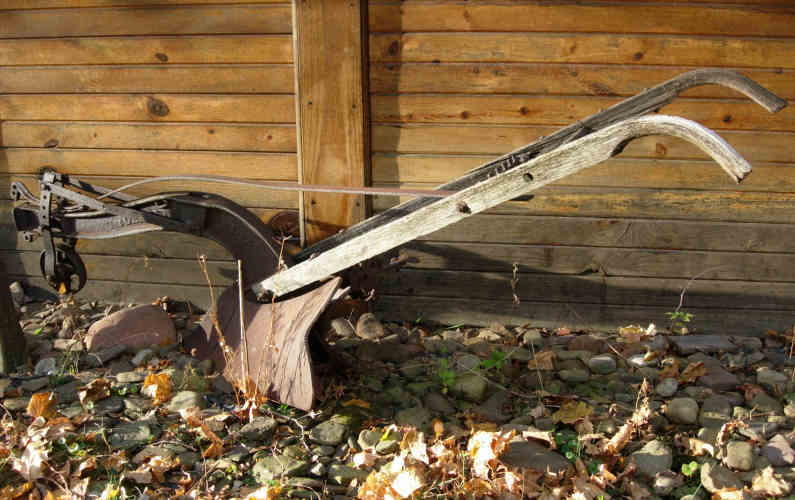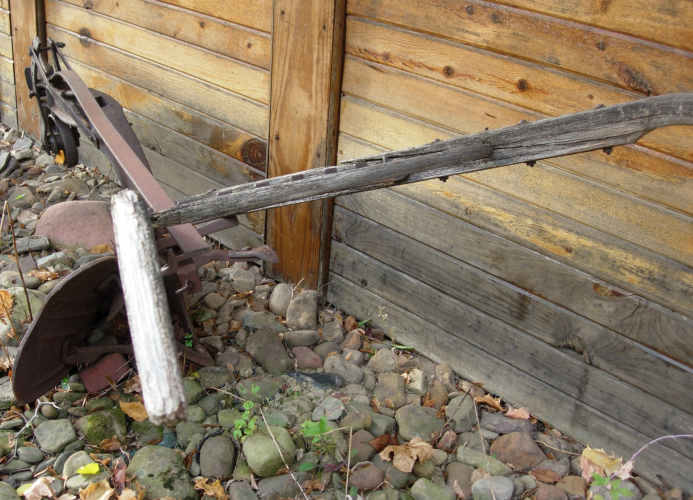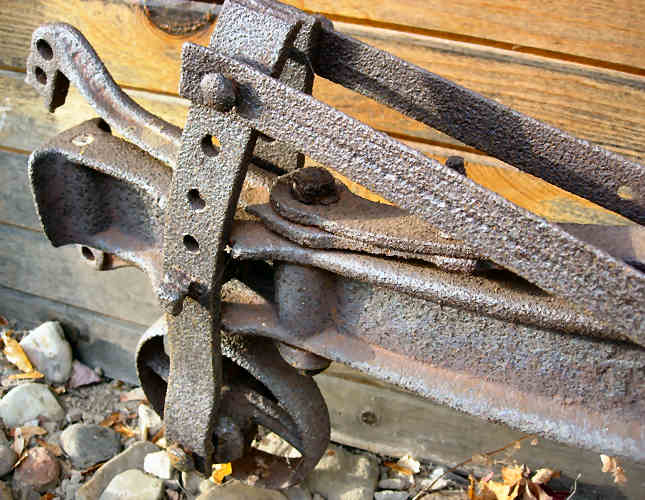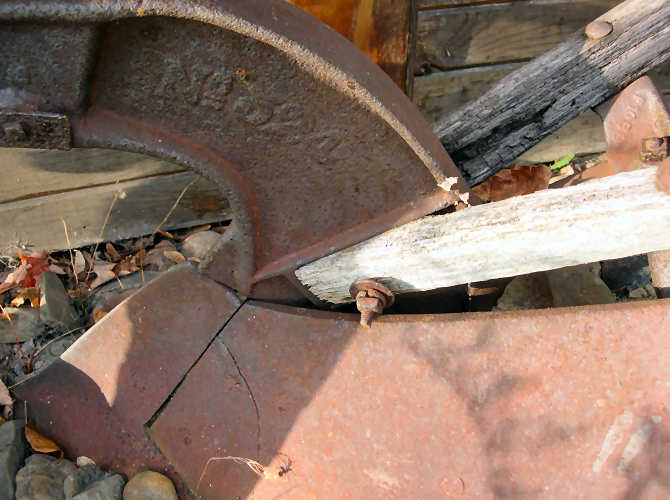


| The hillside plow was an improvement over the standard plow. A standard plow had a stationary plowshare (i.e. blade) that was usually positioned in order that the upturned clods of ground would be pushed to the right. The standard type of plow was fine for use on level ground. But when the farmer needed to till the soil on even a slightly sloped piece of land, following the contour of the land to avoid erosion, the standard plow could be handled easily going in the direction in which the plowshare was positioned toward the higher side of the slope. When the plow was made to go in the opposite direction, with the plowshare positioned toward the lower side of the slope, it might have to be tilted to such a degree as to be unwieldy or downright dangerous. The solution for the farmer who needed to plow hillside or sloping land was the hillside plow. This form of plow had a plowshare that could be pivoted to be positioned toward either side, and therefore allowing for plowing along the contour of a sloping tract of land easily and without danger. This example of the hillside plow has the name The Oliver and the number 524 cast on the main frame. It probably dates to the 1930s or 1940s. The Oliver Farm Equipment Corporation, which manufactured this plow, was an outgrowth of a couple earlier companies. In 1855, James Oliver purchased an interest in a cast iron plow company with a foundry located at South Bend, Indiana. He had never had success with a cast iron plow, so he developed the process known as chilled iron, thus starting the Oliver Chilled Plow Company. In the meantime, Charles Walter Hart and Charles H. Parr had organized a company to manufacture tractors using their own invention, the "traction engine." The Hart-Parr Company was established in 1901 at Charles City, Iowa. By 1929 the Hart-Parr Company, and two other farm machinery companies: the American Seeding Machine Company and the Nichols and Shepard Company, were in need of capital to keep afloat since their products were becoming obsolete. They held discussions with the management of the Oliver Chilled Plow Company, and on 01 April 1929 the four companies merged to become the Oliver Farm Equipment Corporation (which eventually became the Oliver Corporation). |



